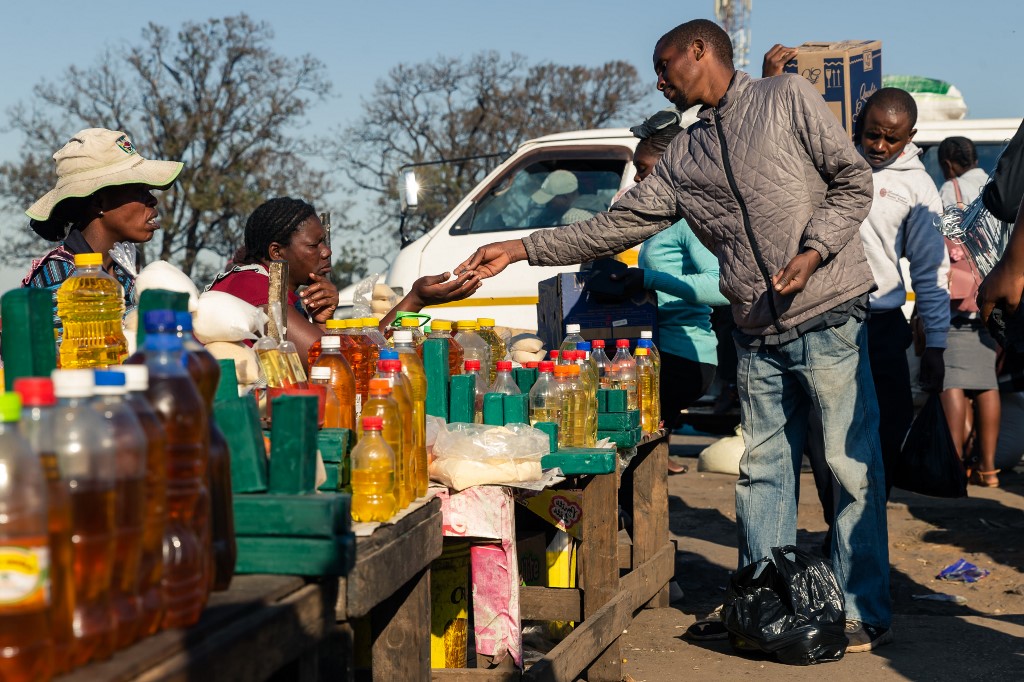FOUR months ago, Simba Muchingami was a very happy man. Customers were queueing outside his modest bakery in Kuwadzana, a high-density residential suburb west of Zimbabwe’s capital, Harare, to get freshly baked sugar buns, doughnuts and other confectioneries.
But these days, his medium-sized electric industrial oven is often cold even by mid-morning, unlike times before when things were already rowdy at dawn. “This place used to be packed around this time,” the 33-year-old told Al Jazeera.
“From 5am, we were busy. Now there is no one.” A tray containing some doughnuts sits abandoned on the floor. Packed fresh sugar buns are neatly arranged on a large table but there are no customers. In the corner, a worker sits idly on a chair. In 2000, former President Robert Mugabe seized farms from white commercial farmers — who had gotten them in colonial times — in a controversial land reforms programme, and distributed them to new Black owners.
Most of them had little or no capital, leading to declining agricultural output, forcing Zimbabwe to look abroad for alternatives. Since then, it has relied on imported wheat — as much as 40 percent of its total imports came from Russia in 2021 — for bread, a staple in the country. After Russia invaded Ukraine in February, global supply chains were disrupted, triggering a massive jump in commodity prices — that has severely affected many countries, including in Africa.
In Harare, Muchingami has found things tough six months on. He and other bakers have hiked the price of bread to US$1.30 from US$1 due to the increase in prices of key ingredients. These days, he sells half of what he used to sell even four months ago and he has let go of five of his eight employees. Harare-based independent economist Victor Bhoroma said the economic effect of the war is pronounced in Zimbabwe because of its reliance on imports.
“The impact on the Zimbabwean economy is very huge as 80 percent of the raw materials used in the local manufacturing sector are imported, hence the bottlenecks caused by the war have slowed the movement of cargo into the country,” Bhoroma said.
“The increase in freight charges and commodity prices (fuel, wheat, soya, fertilisers, and chemicals) also means that cost of production locally has skyrocketed,” he added. “The cost of fuel has gone up from about US$1.40 per litre before the war to US$1.90 now.” The southern African country is already in the throes of an economic crisis due to high inflation.
Ninety percent of the country is unemployed, according to the Zimbabwe Congress of Trade Unions (ZCTU) and its manufacturing output is on a decline. Its few manufacturing industries that relied on raw materials from farms are now also operating way below capacity due to the scarcity of raw materials. So Zimbabwe’s bakers are feeling the heat. Rico fat, a key baking ingredient, was US$3 a kilogramme four months ago, but is now US$4.50/kg, says Muchingami.
The price of two litres of cooking oil is now US$4.80 from US$2.80 a few months ago. A 50-kilogramme bag of flour now costs US$35 from US$28. “Our prices have unfortunately not moved up as much,” he told Al Jazeera. “We have not been able to pass our costs to customers because our clients are vendors and they don’t understand that we need to increase the prices.”
“We are barely keeping our head above the water. If we increase our prices by $10 per dozen [pieces], it’s a war with the customers,” he says. “I have to hike prices gradually.” In a country with a history of hyperinflation and the local currency rapidly losing value, there is a prevailing dilemma. Bakers’ profits crumble amid Russia-Ukraine crisis In 2009, the country had to ditch its currency for the United States dollar as hyperinflation decimated the former currency. And currently, the Zimbabwe dollar is trading at $800 to a US dollar on the black market.
More residents unable to keep up with costs of living, want to buy with the local currency even as more vendors unable to keep up with costs of production, want to be paid in the foreign currency. “We charged in US dollars but the customers say they don’t want to pay that.
So we sell at the prevailing black market rates [for the local currency].” Inflation in Zimbabwe has also been on an upward trend in the past few months. It jumped to 259 percent in July from 191 percent in June due to the introduction of new currency bills into the economy and the global spike in commodity prices. —Aljazeera

